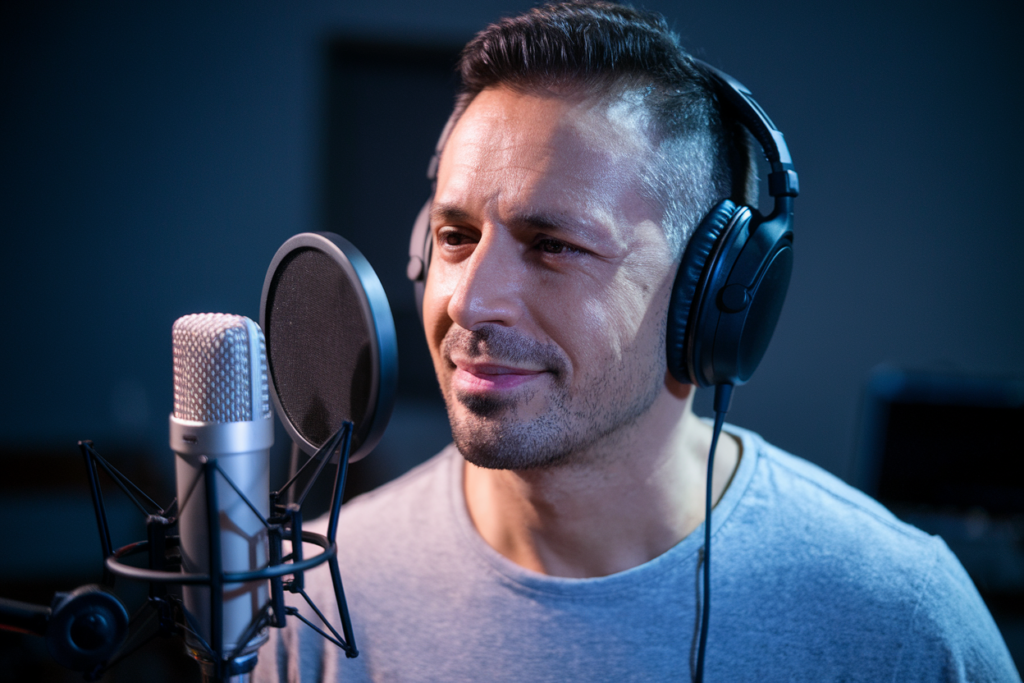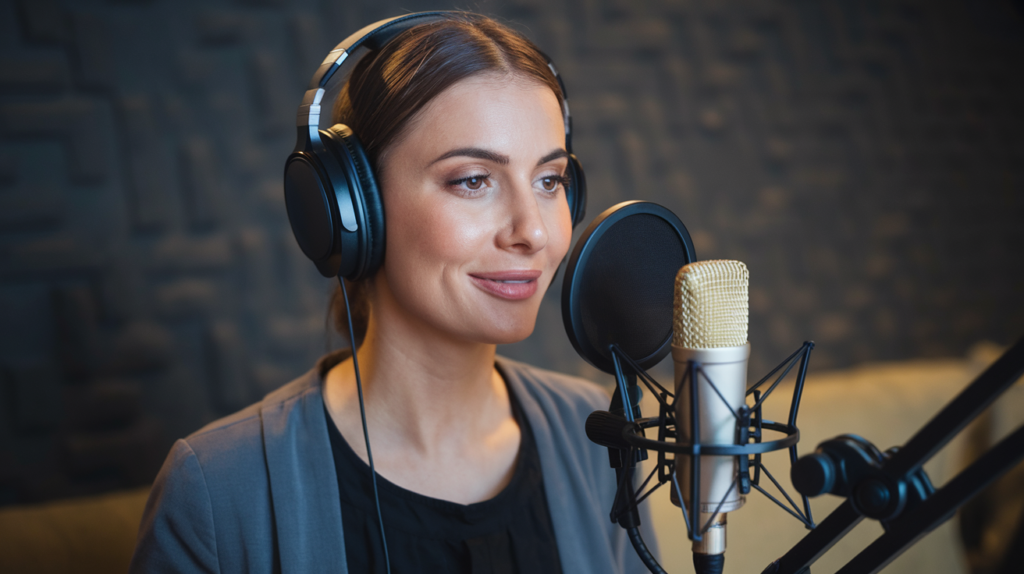Key Takeaways
- Select Quality Voice Talent: Choose skilled voice artists who understand Turkish language nuances and cultural context to ensure authenticity in dubbing.
- Prepare a Detailed Script: Create an accurate script with timing cues and emotional tones to guide voice actors during recordings, maintaining the original intent.
- Record in a Professional Studio: Utilize professional recording environments to minimize background noise and enhance audio quality for clear dubbing results.
- Synchronize Audio with Video: Focus on precise lip-syncing to maintain viewer engagement and realism, ensuring that audio matches visual actions seamlessly.
- Edit and Master Audio: After recording, thorough editing is essential for clarity while mastering balances sound levels for a natural dialogue experience alongside background music.
- Gather Feedback from Native Speakers: Sharing your dubbed video with native Turkish speakers provides valuable insights on cultural relevance and phrasing effectiveness.
Ever wondered what the best way to dub videos in Turkish is? You’re not alone. With the rise of global content consumption, dubbing has become essential for reaching wider audiences. Whether you’re a filmmaker looking to expand your reach or simply want to enjoy foreign films without subtitles, knowing how to dub effectively can be a game-changer.
Best Way to Dub Videos in Turkish
Dubbing videos in Turkish requires careful planning and execution. You want to ensure your content resonates with the local audience while maintaining the original’s intent and emotion. Here are some key steps to achieve effective dubbing:
- Select High-Quality Voice Talent
Finding skilled voice talent is crucial. Look for a voice artist who understands nuances in Turkish language and culture, ensuring authenticity.
- Prepare a Detailed Script
Creating an accurate script is essential. Include timing cues, emotional tones, and character notes to guide the voice actor during recording sessions.
- Record in a Professional Studio
Using a professional studio minimizes background noise and optimizes audio quality. A controlled environment allows for clearer recordings, enhancing the final product.
- Synchronize Audio with Video
Pay attention to lip-syncing when matching the voiceover with video footage. Proper synchronization maintains viewer engagement and believability of the dubbed content.
- Edit and Master the Audio
After recording, editing ensures clarity and consistency across various scenes. Mastering balances sound levels, making sure dialogue sounds natural alongside background music or effects.
- Conduct Quality Assurance Checks
Review the finished product before release. Check for accuracy in translation, emotional delivery by voice actors, and overall coherence of the dubbed video.
- Gather Feedback from Native Speakers
Sharing your video with native speakers can provide valuable insights into cultural relevance and effectiveness of phrasing used in dubbing.
By following these steps diligently, you can create engaging Turkish-dubbed videos that connect well with audiences while preserving essence from their original versions.
Tools for Dubbing
Selecting the right tools is essential to achieve high-quality dubbing in Turkish. You’ll find various software options and hardware requirements that can enhance your dubbing experience.
Software Options
Using professional dubbing software makes a significant difference in quality. Look for programs that offer features like audio synchronization, multi-track recording, and easy editing capabilities. Popular choices include:
- Audacity: A free, open-source tool with robust audio editing features.
- Adobe Audition: A powerful program known for its advanced sound design tools.
- Reaper: An affordable digital audio workstation (DAW) that’s great for both beginners and pros.
These software options allow you to record voiceovers seamlessly while providing flexibility during the editing process. Whether you’re a seasoned voice artist or just starting out, these tools cater to different skill levels and project needs.
Hardware Requirements
Investing in quality hardware enhances your dubbing results significantly. Key equipment includes:
- Microphone: Choose a condenser microphone for crisp and clear recordings.
- Audio Interface: An interface connects your microphone to your computer, ensuring high-quality sound capture.
- Headphones: Use closed-back headphones to monitor recordings accurately without bleed.
Good quality hardware not only improves the final product but also helps create a comfortable working environment. You’ll appreciate the difference when you listen back to your recordings; it’s all about delivering exceptional voiceover talent that resonates with audiences.
Dubbing Techniques
Dubbing videos in Turkish requires specific techniques to ensure high-quality results. You’ll want to consider various methods that enhance the overall viewing experience.
Voice Over vs. Lip Sync
Voice over and lip sync are two primary dubbing techniques you can choose from. Voice over involves recording dialogue that overlays the original audio without matching mouth movements. It’s often used for narrations or when precise synchronization isn’t crucial. On the other hand, lip sync focuses on aligning voice recordings with the original actors’ mouth movements. This technique enhances realism and immersion, making it essential for narrative-driven content where viewers expect seamless integration of audio and visuals.
Multilingual Considerations
When dubbing in Turkish, multilingual considerations play a vital role in maintaining cultural relevance. You must adapt your script not only linguistically but also contextually for local audiences. Engaging native voice talent ensures authenticity while capturing regional dialects or colloquialisms effectively. It’s beneficial to consult with translators who specialize in localization, as they can help bridge any cultural gaps and provide insights on phrasing that resonates well with Turkish viewers.
Investing time into these dubbing techniques leads to polished video products that captivate your audience, ensuring they enjoy every frame without distraction from mismatched audio or awkward translations.
Step-by-Step Dubbing Process
Dubbing a video in Turkish involves several key steps to ensure a polished final product. Follow these guidelines for effective dubbing.
Preparing the Video
Preparing the video lays the foundation for successful dubbing. Start by selecting high-quality footage and ensuring it’s free from technical issues. If you’re working with a script, adapt it for cultural relevance, keeping local idioms and expressions in mind. Engaging a native voice artist can also enhance authenticity. Create a detailed storyboard that outlines scenes, dialogue cues, and emotional tones to guide your voice talent during recording.
Recording the Audio
Recording the audio is where your vision begins to take shape. Choose a quiet environment equipped with professional-grade tools like condenser microphones and audio interfaces for optimal sound quality. Work with skilled voice actors who understand nuances in emotion and delivery, as this will resonate more effectively with Turkish audiences. Direct them clearly on tone adjustments or pacing to match the original intent of each scene.
Synchronizing Audio and Video
Synchronizing audio and video is crucial for creating an immersive experience. Use specialized software that allows precise alignment of dialogue with corresponding visuals; this ensures mouth movements appear natural alongside recorded voices. Pay attention to timing; small discrepancies can distract viewers from the storyline. After synchronization, review every segment to catch any mismatches before proceeding to editing.
By following these steps diligently, you create engaging Turkish-dubbed videos that connect authentically with your audience while preserving the essence of the original content.
Common Challenges in Dubbing
Dubbing videos in Turkish presents several challenges that can impact the final product. Understanding these hurdles helps you navigate the process more effectively.
Language Nuances
Language nuances play a significant role in dubbing. Turkish has unique expressions and cultural references that may not translate directly from other languages. When adapting scripts, consider local idioms, slang, and tone to maintain authenticity. Choosing voice talent familiar with these nuances is crucial for capturing the intended message and emotion of the original content.
Technical Issues
Technical issues often arise during the dubbing process. Synchronizing audio with video requires precise timing, which can be tricky without proper tools. Use high-quality recording software to minimize latency problems, ensuring that dialogue matches lip movements accurately. Additionally, background noise can detract from your final product; investing in soundproofing solutions or using professional-grade equipment reduces this risk significantly.
By being aware of these common challenges and addressing them proactively, you enhance the quality of your Turkish-dubbed videos while providing a seamless viewing experience for audiences.
Conclusion
Dubbing videos in Turkish opens up a world of opportunities for creators looking to engage local audiences. By following best practices and utilizing the right tools you’ll not only enhance the quality of your content but also ensure it resonates with viewers. Prioritizing high-quality voice talent and understanding cultural nuances will elevate your project beyond mere translation.
Investing time in mastering dubbing techniques like voice over and lip sync can make all the difference in creating an immersive experience. Remember that addressing common challenges upfront will help you produce polished, professional results. With these strategies in hand you’re well-equipped to create captivating Turkish-dubbed videos that maintain the essence of the original while connecting authentically with your audience.
Frequently Asked Questions
Why is dubbing important for Turkish videos?
Dubbing is essential for Turkish videos as it helps filmmakers reach wider audiences and allows viewers to enjoy foreign films without relying on subtitles. Effective dubbing enhances accessibility and engagement, making content more enjoyable for local audiences.
What are the best practices for dubbing in Turkish?
Best practices include selecting high-quality voice talent, preparing a detailed script, recording in a professional studio, synchronizing audio with video, editing carefully, conducting quality checks, and gathering feedback from native speakers to ensure authenticity.
What tools are recommended for Turkish dubbing?
For high-quality Turkish dubbing, recommended software includes Audacity, Adobe Audition, and Reaper. On the hardware side, invest in a good condenser microphone, an audio interface, and closed-back headphones to capture clear sound effectively.
What are the key dubbing techniques used in production?
Key dubbing techniques include voice over and lip sync methods. Voice over records dialogue without matching mouth movements while lip sync aligns recordings with original actors’ speech for greater realism. Both techniques enhance viewer immersion.
How should I prepare for the dubbing process?
Preparation involves selecting high-quality footage, adapting scripts culturally relevant to the audience, creating a detailed storyboard, and ensuring a quiet recording environment with skilled voice actors who convey appropriate emotions during recording.
What common challenges arise during Turkish dubbing?
Common challenges include language nuances such as idioms and cultural references that may not translate well. Technical issues like synchronizing audio with video also pose difficulties that require proficient software solutions and soundproof environments to resolve effectively.







